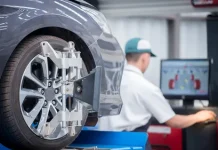When buying a motorcycle, ATV, UTV, or any other recreational vehicle, one of the first questions that comes up is whether to invest in an extended powersports warranty. Most new powersports vehicles come with a limited manufacturer warranty that covers basic repairs and defects for a set period, typically one to two years. But what happens after that? Extended warranties promise peace of mind and long-term protection—but are they really worth the added cost?
An extended powersports warranty is essentially a service contract that kicks in after the factory warranty ends. It covers repair or replacement of certain parts and systems, depending on the level of coverage you choose. These warranties are often marketed as a safeguard against high repair bills down the line, especially for owners who plan to keep their vehicle for several years or use it frequently.
One of the main reasons people consider an extended warranty is the potential cost of repairs. Powersports vehicles can be expensive to fix, particularly when it comes to engines, transmissions, and electronic systems. A single major repair can cost hundreds or even thousands of dollars—far more than the price of the warranty itself. In this case, extended coverage could pay for itself with just one claim.
However, not all extended warranties are created equal. Some cover only the most basic components, while others offer more comprehensive protection that includes wear-and-tear items, diagnostics, and labor. It’s important to read the contract carefully and understand what’s included—and what’s not. For example, routine maintenance, cosmetic damage, and issues caused by improper use are typically excluded.
The value of an extended warranty also depends on how you use your vehicle. If you’re a casual weekend rider who puts minimal mileage on your machine each year, you may never need the coverage. On the other hand, if you’re riding frequently on rough terrain or using your vehicle in demanding conditions, the risk of mechanical issues increases, and the warranty might become a worthwhile investment.
Another factor to consider is the reliability of the brand and model you’re buying. Some manufacturers have excellent track records for durability, while others are known for more frequent issues. Doing some research on the typical performance and repair history of your vehicle can help you make a more informed decision.
It’s also worth comparing the cost and coverage between dealer-offered and third-party warranties. While dealer warranties are often easier to use with authorized service centers, third-party providers may offer longer terms, more flexible service options, or better pricing. Just be sure to choose a reputable provider with good customer reviews and a clear claims process.
In the end, whether an extended powersports warranty is worth it depends on your budget, how you use your vehicle, and your willingness to pay for repairs out of pocket. For some, it’s a smart way to protect a significant investment. For others, it may be an added cost with little return. Weighing your personal risk tolerance against the potential repair bills can help you make the right choice.










